Before the summer weather strikes, schedule time this spring to run through an AC maintenance checklist. AC contractors are kept very busy in the summer and winter, so it’s best to conduct a maintenance check in the spring and fall seasons. Scheduling an off-season tune-up will help prevent problems before they happen. There are several steps that you can take yourself, as well as scheduling a routine check-up with your HVAC professionals to get your system summer-ready!
A typical maintenance routine should include the following:
- Get the right equipment installed correctly – Replacing old equipment is the best way to save energy costs and money. To reach its full potential, a system must be the right size for your home and be properly installed. Improper installation or sizing can significantly reduce your systems efficiency. Before the summer weather strikes, schedule time this spring to run through an AC maintenance checklist. AC contractors are kept very busy in the summer and winter, so it’s best to conduct a maintenance check in the spring and fall seasons. Scheduling an off-season tune up will help prevent against problems before they happen. There are several steps that you can take yourself, as well as scheduling a routine check-up with your HVAC professionals to get your system summer-ready!
- Check your thermostat settings – Ensure that your system keeps you comfortable while you are home and saves energy while you are away. Installing a programmable thermostat is one of the cheapest and easiest ways to save energy cost since it will automatically regulate your home’s temperature depending on your family’s schedule.
- Run the air conditioning prior to warmer weather – Do a test run for about 10 minutes to check for any warning signs. Waiting until summer is in full swing to check for issues might put you at the bottom of a long waiting list.
- Change filters regularly -Inspect the air filter monthly and replace as necessary. If it looks dirty after a month, change it. At a minimum, change the filter every 3 months to improve air quality and efficiency.
- Check the area surrounding your outdoor unit – Remove leaves and debris from around your system, trim back any nearby bushes and clean out leaves or dirt from the top of the AC unit to improve air flow. While hiding the AC unit behind shrubs or trees may help your curb appeal, it will hinder the air flow and cause your system to work harder than necessary.
- Seal ducts properly – If your ducts are leaking, air is being leaked into spaces in your home that you do not want cooled and affecting your systems efficiency.
- Clean the drain pipe – A blocked drain pipe can lead to leaks and cracks in the piping.
- Clean the Evaporator and Condenser coils – This is the area that is most prone to accumulating dirt and mold. Keeping them clean will increase your unit’s efficiency.
- Inspect the refrigerant levels – Make sure that there is plenty of refrigerant (Freon) so your unit doesn’t have to work twice as hard. If the levels are low this typically signifies that your system has a leak somewhere.
- Check all electrical components and controls – Ensure that everything is working as it should to reach its full energy efficiency. Tighten all the electrical connections and measure the voltage on motors.
- Lubricate all the moving parts – Parts that require, but lack lubrication will cause friction in motors and cause an increase in electricity usage.
- Clean all blower components – Airflow problems can reduce your system’s efficiency and a clean airflow will reduce debris and dirt from being circulated around the house.


